Gone are the days when developers had to spend months and years learning to code.
With the advent of AI tools, you can now develop code in minutes using tools like ChatGPT and Gemini, among others.
Are you searching the internet for “the best AI tools for coding”? You have arrived at the right place.
In this blog, we are going to talk about the latest AI code tools, their uses, advantages, features, and limitations.
Let’s dive deeper and explore!
How to Use AI Coding Tools?
You can greatly increase your software development productivity and efficiency by using AI coding tools. Here’s how to maximize their potential:
1. Choose the Right Tool: Choose an AI coding tool based on your project’s need and your programming language.
2. Integration: Include your chosen code editor or Integrated Development Environment (IDE) with the AI coding tool.
3. Training and Customization: Based on your coding style and project-specific patterns, certain AI coding tools enable training and customization.
4. Receipts and Automatic Completion: Request brief code segments from the tool using the auto-completion feature to expedite the coding process.
5. Error Detection and Debugging: By identifying patterns and providing recommendations for enhancements, artificial intelligence (AI) tools assist you in locating errors, weaknesses, and potential vulnerabilities in your code.
6. Learning and Documentation: To fully utilize the AI coding tool, go through the tutorials and documentation it offers. Discover more about sophisticated features such as code generation, code reworking, and code summarization.
7. Feedback Loop: Give the tool’s creators input so they can gradually increase the tool’s efficacy and accuracy.
Which are the Best AI Coding Tools?
These are some of the best AI tools for coding that you must use to code better.
1. Tabnine
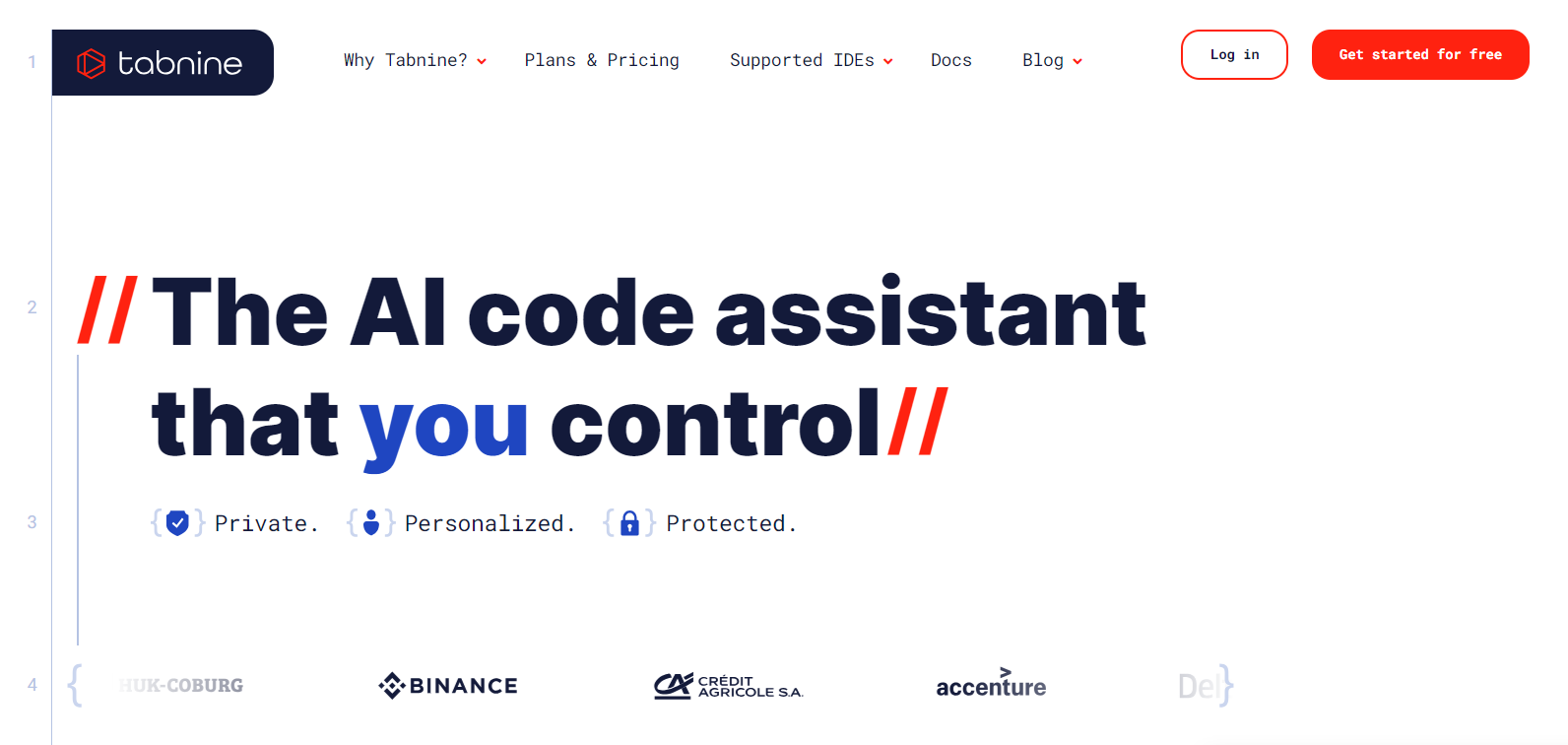
Developers can benefit from code suggestions, auto-completion, and other productivity enhancing capabilities provided by Tabnine, which is driven by AI and integrates with different code editors.
Pros:
- Enhancement in Coding Speed: Tabnine significantly accelerates the coding process by providing suggestions and real-time code completions based on the context of the code being written.
- Multilingual Support: It is compatible with a wide range of programming languages, including C++, Python, JavaScript, and Java.
- Integration with IDEs and code editors: By integrating with well-known IDEs and code editors, such as Visual Studio Code, IntelliJ IDEA, Sublime Text, and others, Tabnine offers a smooth development experience.
- Context-Aware Suggestions: The AI-driven engine offers recommendations based on context, which enhances the precision and applicability of code completions.
Cons:
1. Performance Impact: The performance of the IDE may be affected by running Tabnine on some systems, particularly those with low resources.
2. Accuracy Variability: Depending on the intricacy of the code and the caliber of the training set, Tabnine’s recommendations may occasionally be improper or irrelevant, despite their general accuracy.
3. Dependency on AI: If you rely too much on AI to finish your code, beginners who are still learning syntax and coding conventions may find it more difficult to learn.
Subscription:
- Basic Plan: Free
- Pro:$12 per user/month (Free for 90 days)
- Enterprise: $39 per user/month ( With 1 year commitment )
2. Replit
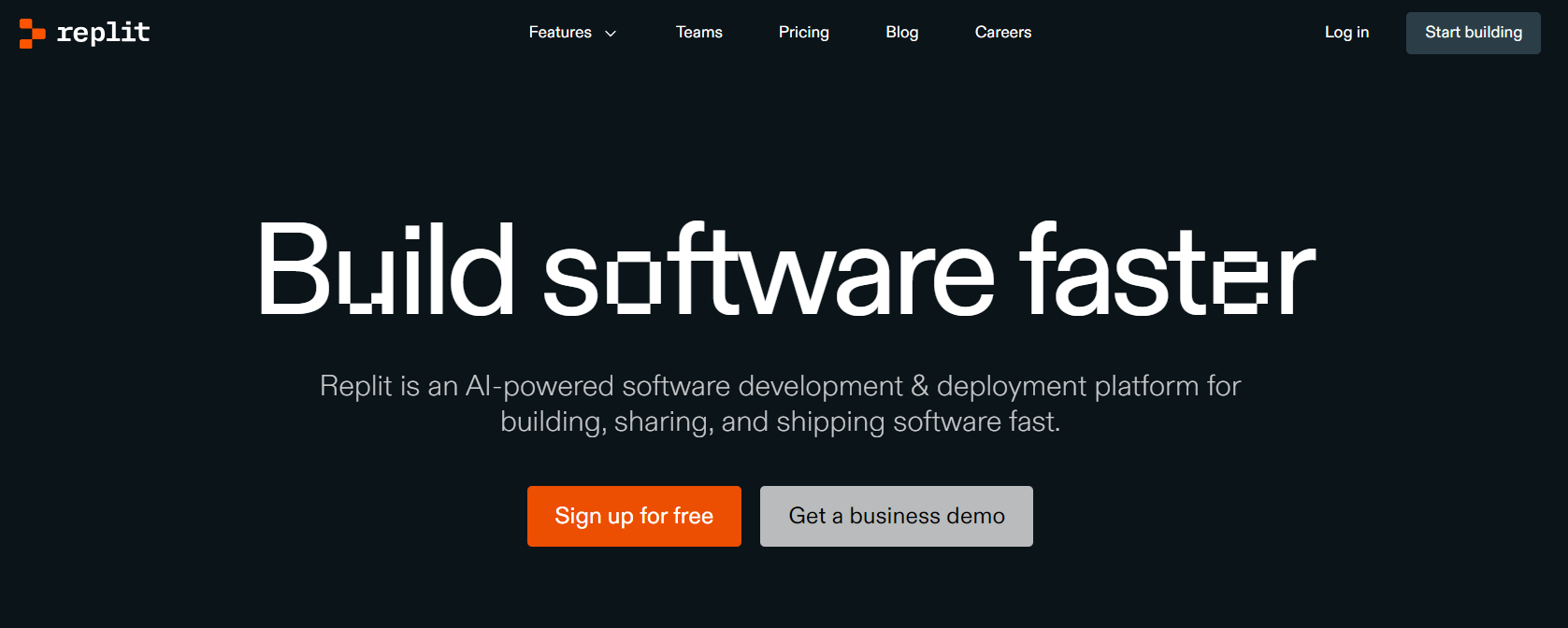
Replit is an online resource that offers multiple programming language integrated development environments (IDEs).
Pros
- Instant Setup: Making it accessible for beginners and convenient for experienced programmers. Users can start coding immediately without worrying.
- Working together on a project: Replit allows multiple users to work on the same document at once, much like Google Docs for code.Replit is an incredibly versatile tool because it supports a wide range of programming languages.
- Integrated Tools: Replit provides a built-in database for easy data management within your applications.
Cons:
- Performance Limitations: Depending on the user’s location and the platform’s server load, there might be latency issues.
- Privacy Concerns: users should be cautious about the information they share and the code they write.
- Internet Dependency: Requires Internet Connection to use the platform effectively.
Subscriptions:
- Basic Plan: Free
- Pro:$10 Per Month
- Business:$33per user/per month
- Enterprise: Coming soon
3. Source Graph
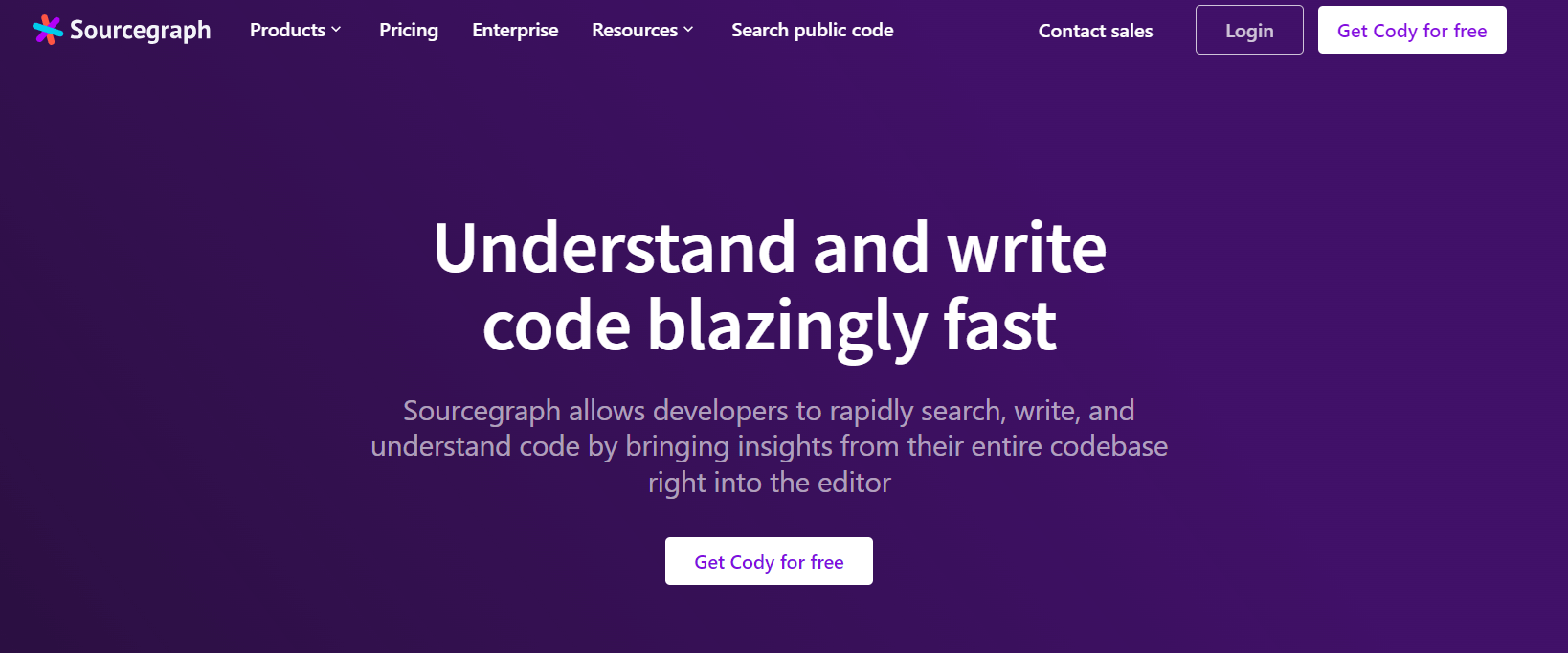
Pros:
- Code can be written and fixed more quickly with the aid of AI-assisted autocomplete, which supports numerous languages and IDEs.
- Explains and responds to inquiries regarding the organization and operation of the code.
- Personalized Orders: Produce assessments, enhance programming, and establish personalized orders.
Cons:
- Limited IDE Support: Some IDEs are still in the beta or experimental stages.
- Concerns about LLM Lock-In: Possible reliance on particular language models.
Subscriptions:
- Basic Plan: Free
- Pro: $9 per user/ per month
- Enterprise:$19 per user/ per month
4. CodeWP
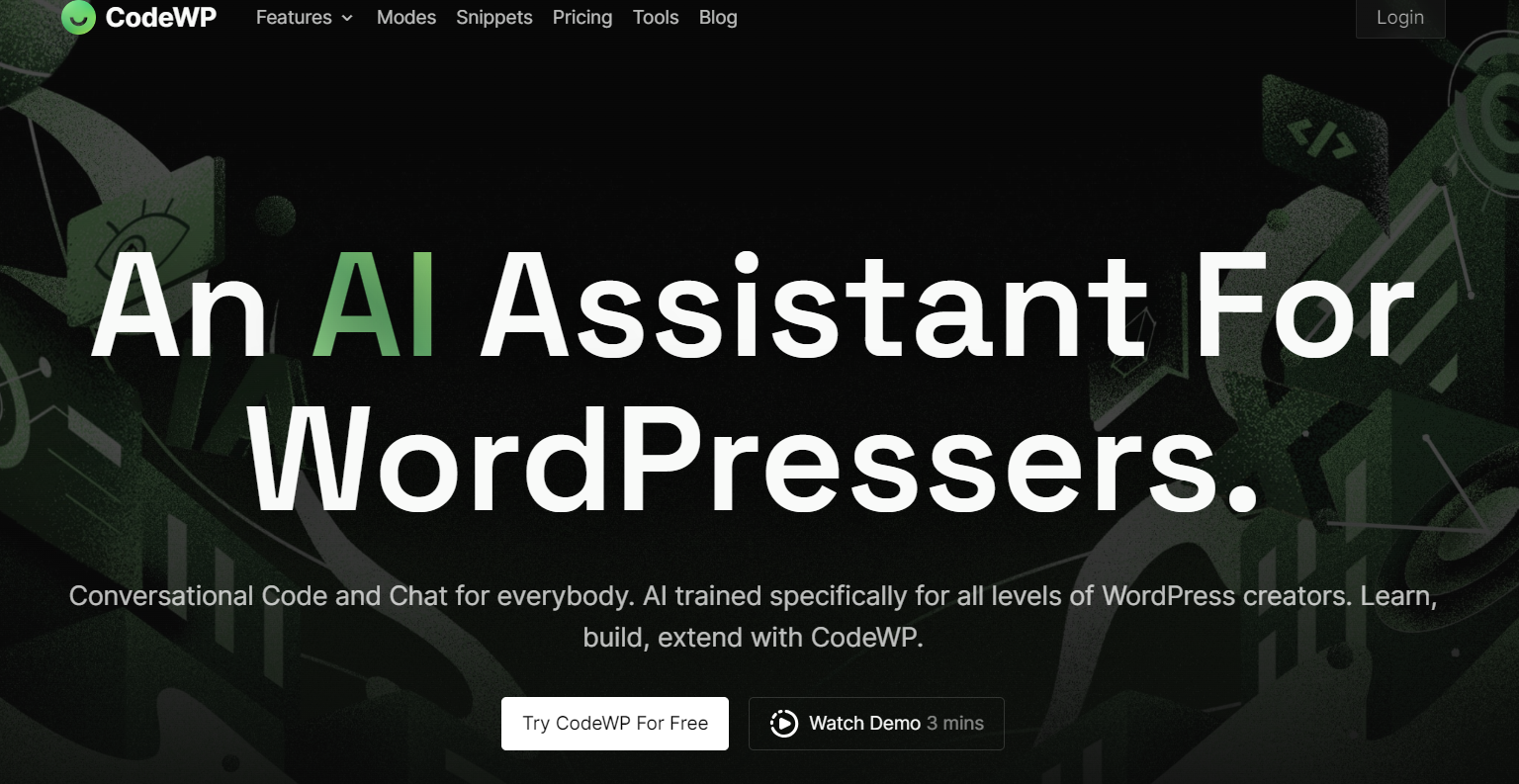
CodeWP is a platform that provides materials and tools for WordPress development on a subscription basis.
Pros:
- Access to Tools for WordPress Development: Members get a variety of tools that help streamline WordPress development and save time and effort.
- Periodic Updates: As a benefit of their membership, subscribers could be eligible for regular updates and new features, ensuring that they always have access to the most recent tools and technology for WordPress development.
- Community and Support: A typical element of subscription services is the ability to access a developer community and support resources, where users can share information and pose queries.
Cons:
- Dependency: Development workflows could be hampered if the platform goes down or stops offering certain features.
- Limitations on Features: Depending on the membership type, customers may not be able to use specific features or tools unless they subscribe to a higher package.
Users may encounter compatibility issues when integrating CodeWP.ai products with other third-party plugins or services that they use for WordPress projects.
Subscriptions:
- Basic Plan: Free
- Pro Plan: $18 / per month billed annually
- Agency: $48/ per month billed annually
5. Snyk.io
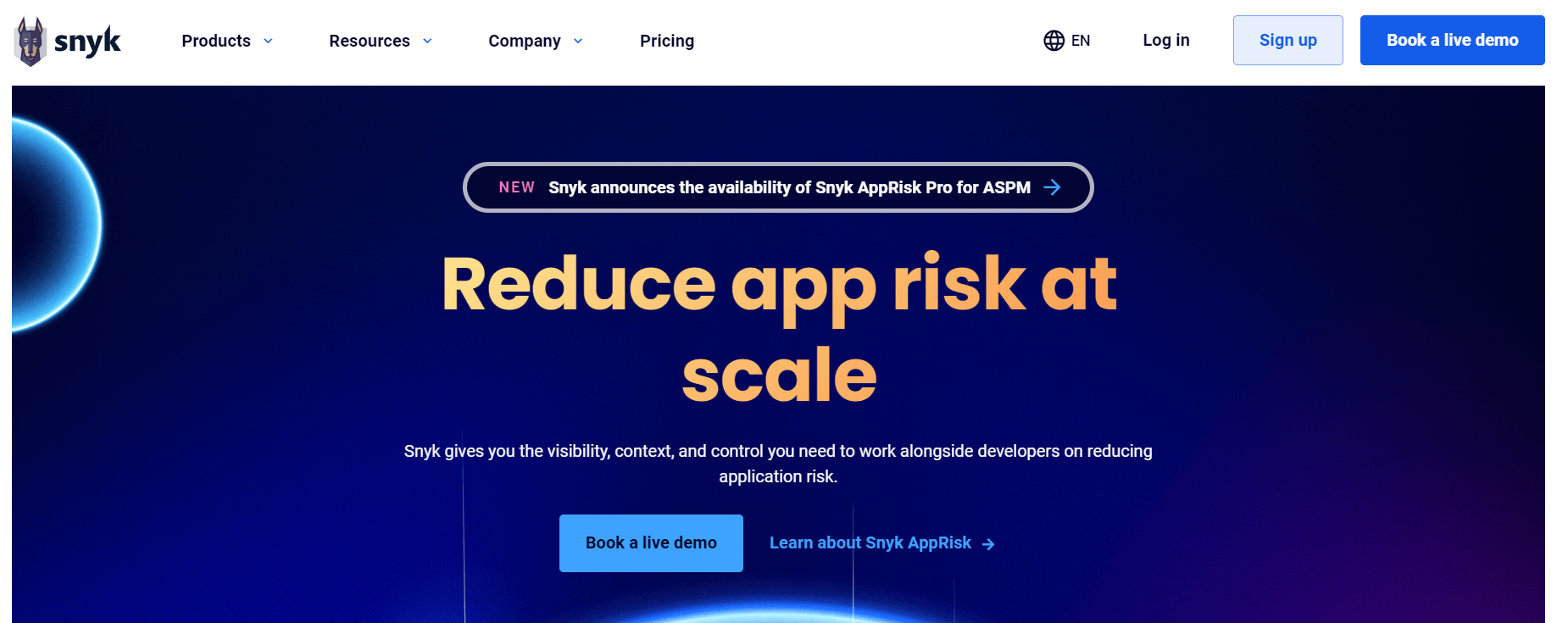
For controlling and safeguarding open-source dependencies in your software projects, Snyk provides a subscription based service.
Pros:
- Vulnerability identification: By checking your project’s dependencies for known vulnerabilities and providing actionable insights, Snyk.io helps you keep your program secure.
- Continuous Monitoring: Through Snyk, you can easily find vulnerabilities that could impact your project.
- Integration with CI/CD pipelines: Snyk.io integrates effortlessly with popular CI/CD technologies, allowing you to automatically integrate security checks into your development process.
- License Compliance: By assisting you in making sure your project dependencies adhere to licensing guidelines, Snyk.io lowers the possibility of legal problems arising from the use of open-source software.
Cons:
- False positives: Similar to any automated security tool, Snyk.io might occasionally produce false positive alerts that needlessly require further examination or repair work.
- Dependency on external service: If you want security, using Snyk.io requires you to rely on an external service. While this has its uses, some users may find it concerning because it relies too much on an outside source.
Subscriptions:
- Basic Plan: Free
- Pro:$25 Per month/ product
- Enterprise: Contact Sales Team
6. Openai-codex
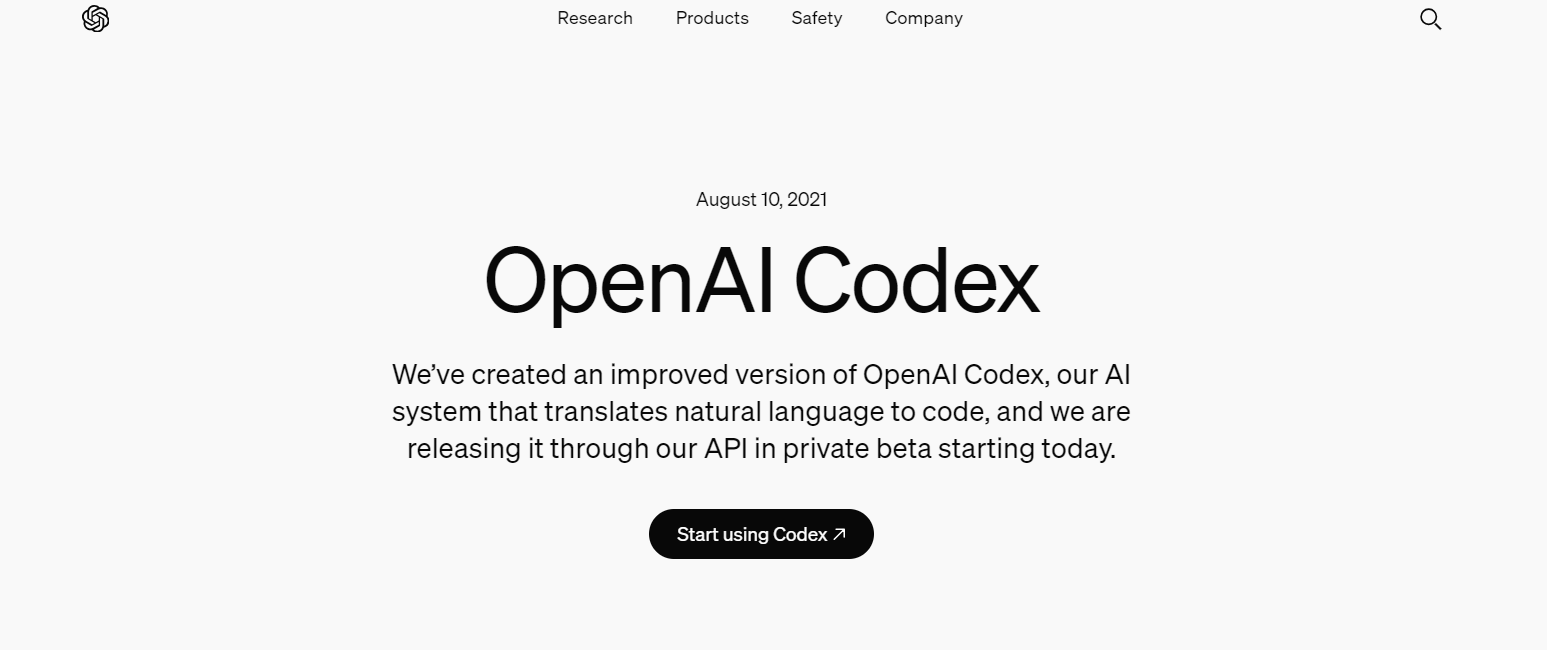
Coders may create code more quickly with the powerful AI tool GitHub Copilot, formerly known as OpenAI Codex.
Pros:
- Code Assistance: Developers’ idea-to-code translation is facilitated by Codex’s capacity to generate code recommendations from natural language descriptions.
- Enhanced Productivity: Codex can greatly expedite the development process by applying intelligent code completion and automating repetitive tasks.
- Learning Aid: For programmers looking to enhance their coding abilities and grasp new ideas, Codex can be a very helpful resource.
- Decreased Errors: Codex can assist in lowering frequent coding errors and enhancing code quality by offering context-based code snippet suggestions.
Cons:
- Overreliance: The likelihood exists that developers may become overly dependent on Codex, perhaps hindering their capacity for critical thinking and problem-solving.
- Privacy Issues: The use of any AI-powered tool, especially one that analyzes code and natural language input, might give rise to privacy and data security concerns.
Top AI Coding Tools for Beginners
Selecting tools with strong documentation and community assistance is crucial for individuals who are new to AI development.
TensorFlow/Keras: Google created both the freely available artificial intelligence system TensorFlow, which is a high-level neural network API, and Keras. They provide a robust and flexible neural network building and training platform.
Jupyter Notebooks: You can create and share documents containing interactive code, formulas, graphics, and dialogue. This web application is free of charge to use.
Google Colab: A free cloud-based tool that functions similarly to a Jupyter Notebook for writing and running Python programs is Google Colab.
Fast.ai: It is a PyTorch artificial intelligence tool that facilitates the training of contemporary deep learning models.
Using AI Coding Tools Offers Several Benefits:
Enhanced Productivity: Artificial intelligence (AI) coding tools relieve developers of repetitive tasks like code creation, debugging, and optimization, freeing them up to concentrate on challenging problems and producing high-quality software rapidly.
This increased efficiency can be particularly beneficial when working with a software development company, as it allows teams to focus on complex problem-solving and innovative solutions, ultimately delivering higher-value products to clients in shorter timeframes.
Development Can Be Accelerated: The time spent writing and debugging code can be reduced with the use of artificial intelligence (AI) tools that provide features like code suggestions, auto-completion, and predictive coding. It cuts down on development time.
Better Code Quality: Tools with AI capabilities often include integrated code analysis and debugging functions. Code of a higher caliber can be produced by utilizing these features to help spot errors, defects, and potential vulnerabilities early on.
Enhanced Cooperation: Some AI coding solutions provide code sharing, version control, and real-time cooperation, which improves developer collaboration.
Cross-Language Support: Since many AI coding tools are multi-language compatible, working on multi-language projects and switching between languages is made easier for developers.
Common Challenges in AI Code Optimization
AI code optimization can be challenging, and engineers often encounter several typical mistakes. Below are some of them;
One common mistake in software development is premature optimization. Code that isn’t necessary may be optimized by developers, wasting time and making the code less maintainable.
Absence of profiling: Developers might not be able to determine which sections of the code are using up the most resources if they don’t conduct adequate profiling. This may result in ineffective optimization efforts or the failure to identify important bottlenecks.
Ineffective data processing: Data processing can frequently be a major bottleneck in artificial intelligence applications. The pipeline can be slowed down entirely by inefficient data loading, preprocessing, or storage.
Disregarding algorithmic enhancements: In certain cases, reconsidering the algorithm itself can yield a notable increase in performance instead of concentrating only on optimizations at the code level.
Insufficient usage of libraries and frameworks: A lot of AI tasks can be completed effectively with the help of current libraries and frameworks.
Absence of testing: When performance-critical code is altered, optimizations may introduce undetectable behavior or minor bugs.
Best Practices for Efficient AI Code
Creating efficient AI code involves optimizing both the development process and the execution performance.
- Model Selection and Design:
Choose the Right Model: (e.g., MobileNet for mobile devices).
Model Compression: To cut down on model size and inference time without noticeably sacrificing accuracy, apply methods like quantification, trimming, and knowledge distillation.
-
Data Management:
Efficient Data Loading: Use optimized data pipelines to load and preprocess data.
Augmentation and Preprocessing: Perform data augmentation and preprocessing steps on the fly during training to save memory.
-
Training Optimization
Batch Size: Select the ideal batch size to balance calculation speed and memory utilization.
Mixed Precision Training: To expedite training and minimize memory consumption, employ mixed precision training with lower precision (e.g., FP16).
-
Code Optimization:
Utilize GPU acceleration, multiple threads, and multiprocessing to achieve efficiency and complexity. Employ JAX, PyTorch, TensorFlow, or other frameworks that provide these functionalities.
Efficient Algorithms: Implement efficient algorithms and data structures. Avoid redundant computations and use memoization where applicable.
-
Profiling and Debugging
Profiling Tools: To locate bottlenecks, use profiling tools such as TensorBoard, PyTorch Profiler, and NVIDIA Nsight.
Benchmarking: To find performance problems, compare various sections of your code regularly.
-
Model Serving
Efficient Inference: Optimize inference performance by using frameworks like TensorRT, ONNX Runtime, or TFLite.
-
Constant Enhancement
Keeping up with following the most recent findings and developments in AI will allow you to take advantage of new methods and resources that can boost productivity.
Future of AI programming languages
The fields of software development and artificial intelligence will see significant advancements and patterns that will impact the creation of programming languages for AI.
-
Domain-Specific Languages (DSLs)
TensorFlow and PyTorch
New DSLs
-
Integration with Existing Ecosystems
Python’s Dominance: Python is likely to remain the primary language for AI.
-
Low-Code/No-Code Platforms
Ease of Use: The rise of low-code and no-code platforms (like Microsoft’s Power Platform, Google’s AutoML, and others
-
Quantum Computing Integration
Quantum Languages: Qiskit(Python-based) and Microsoft’s Q#, will become more relevant, especially for complex problem-solving and optimization tasks in AI.
-
Enhanced Tooling and Libraries:
Automated ML (AutoML): These tools will advance in sophistication and ease of use.
Explainable AI (XAI): Libraries and resources with an emphasis on AI model fairness and interpretability (e.g., SHAP, LIME).
-
Performance and Scalability
Optimized Frameworks: Continued optimization of existing frameworks (TensorFlow, PyTorch) for better performance on both CPUs and GPUs.





